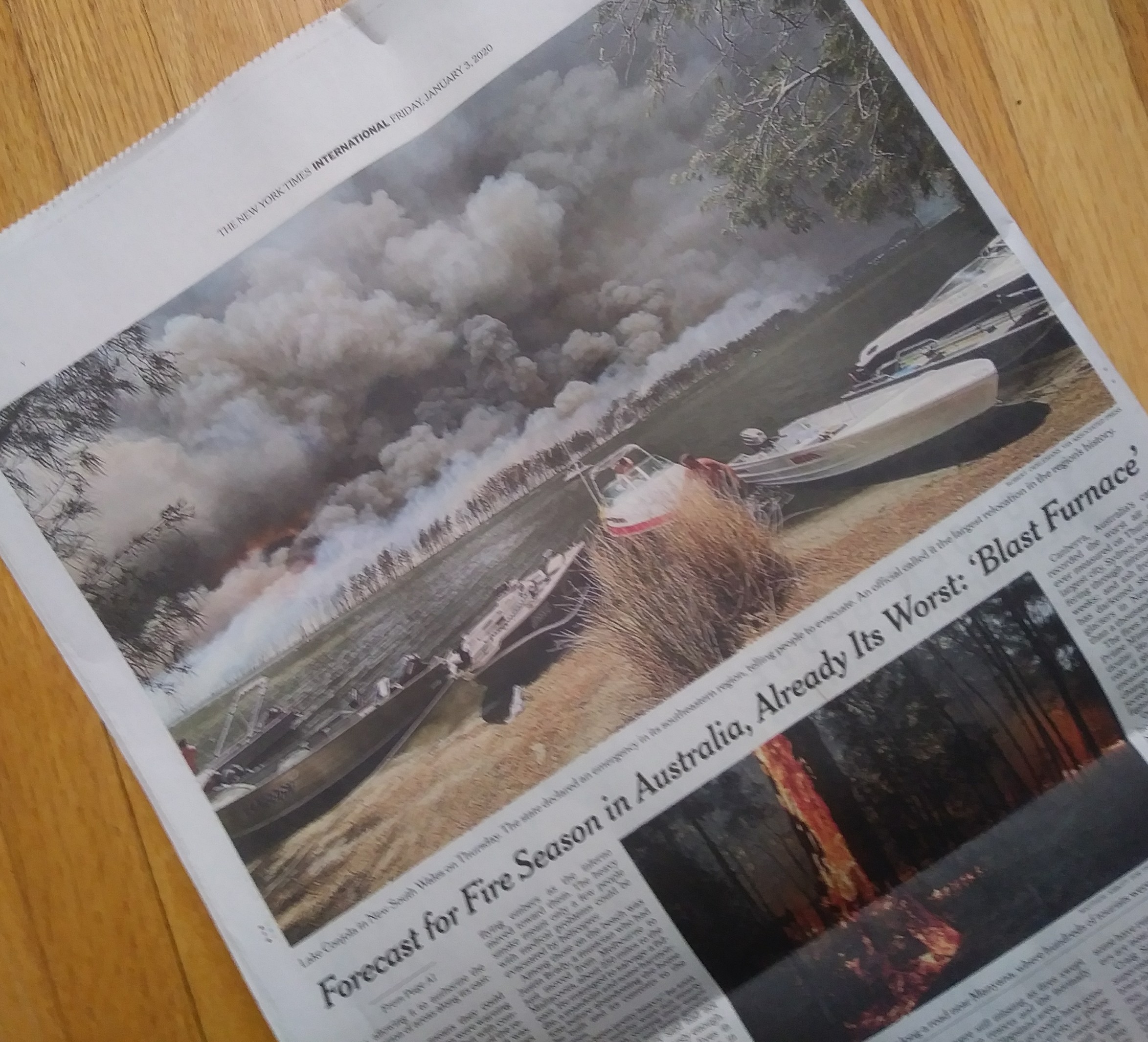JANUARY 4, 2020 – If you haven’t seen images of Australia’s Armageddon, you drank too much holiday grog. Extreme drought and record high temperatures turned the “fire season” into cataclysmic devastation.
Decades ago I spent a month in the region now in flames. It is—or was—packed with eucalyptus trees, vulnerable to fire given the high flammability of the oil they emit. In fact, Blue Mountain National Park west of Sydney is called that hue because of the haze of eucalyptus-filled atmosphere above the beautiful region.
So far, two dozen people and 1,500 homes have been destroyed. These figures will likely rise. According to ecologists at the University of Sydney, half a billion animals have perished in the flames—including 30% of the koala population in New South Wales. The destruction of vast swaths of habitat will have severe, long-term consequences for the entire food chain.
A less dramatic but equally ominous effect is the cloud of ash that has settled across the glaciers of New Zealand, over 1,000 miles away. Already under siege by climate change, the ash-covered glaciers will now absorb more sunlight, thus increasing their melt-rate.
Meanwhile . . . record-breaking downpours have wreaked havoc in Indonesia. Flooding has killed 43 people and rendered 400,000 homeless in Jakarta, 40% of which, by the way, already lies below sea level.
One can’t consider these catastrophes without thinking about climate change—and its deniers. Weather, we all know, is a dicey operation, and its link to climate is a complicated one. However, with each report of further scientific research the correlation between weather and climate grows closer; each natural disaster a more probable harbinger of things to come.
On the climate front, we’re well into a feedback loop, wherein, irrespective of denial of the causal link between the burning of fossil fuels and climate change—that is, denial of the science behind “fingerprinting” the source of carbon releases by isotopes—the melting of Greenland glaciers, the thawing of arctic permafrost, and the warming of ocean water are phenomena that can be accurately measured. These, in turn, are now irreversible engines of climate change. The burning of fossil fuels punched holes in the floor of our vessel. The inflow exceeds our bilge pump’s performance. Soon, no captain’s command, however draconian, can bring us back from the tipping point.
We’ll then have to switch from bilge pump to lifeboat; from, “How do we stop climate change?” to “How do we adapt to it?”
This is not theoretical. Already casualty-insurance companies and the military are strategizing in earnest to face climate change. Bona fide studies (e.g. UN; governmental studies; academic research not funded by the fossil fuel industry), reveal the magnitude of the problem in financial cost and population displacement.
And we thought solvency of Social Security or growing sovereign, corporate and consumer debt (as percentages of GDP) were forefront problems! Silly us. The party in power—once the home of haranguers about such matters—has wished them all away. Why not climate change too?
(Remember to subscribe to this blog and receive notifications of new posts by email.)
© 2020 Eric Nilsson
(Remember to subscribe to this blog and receive notifications of new posts by email.)
